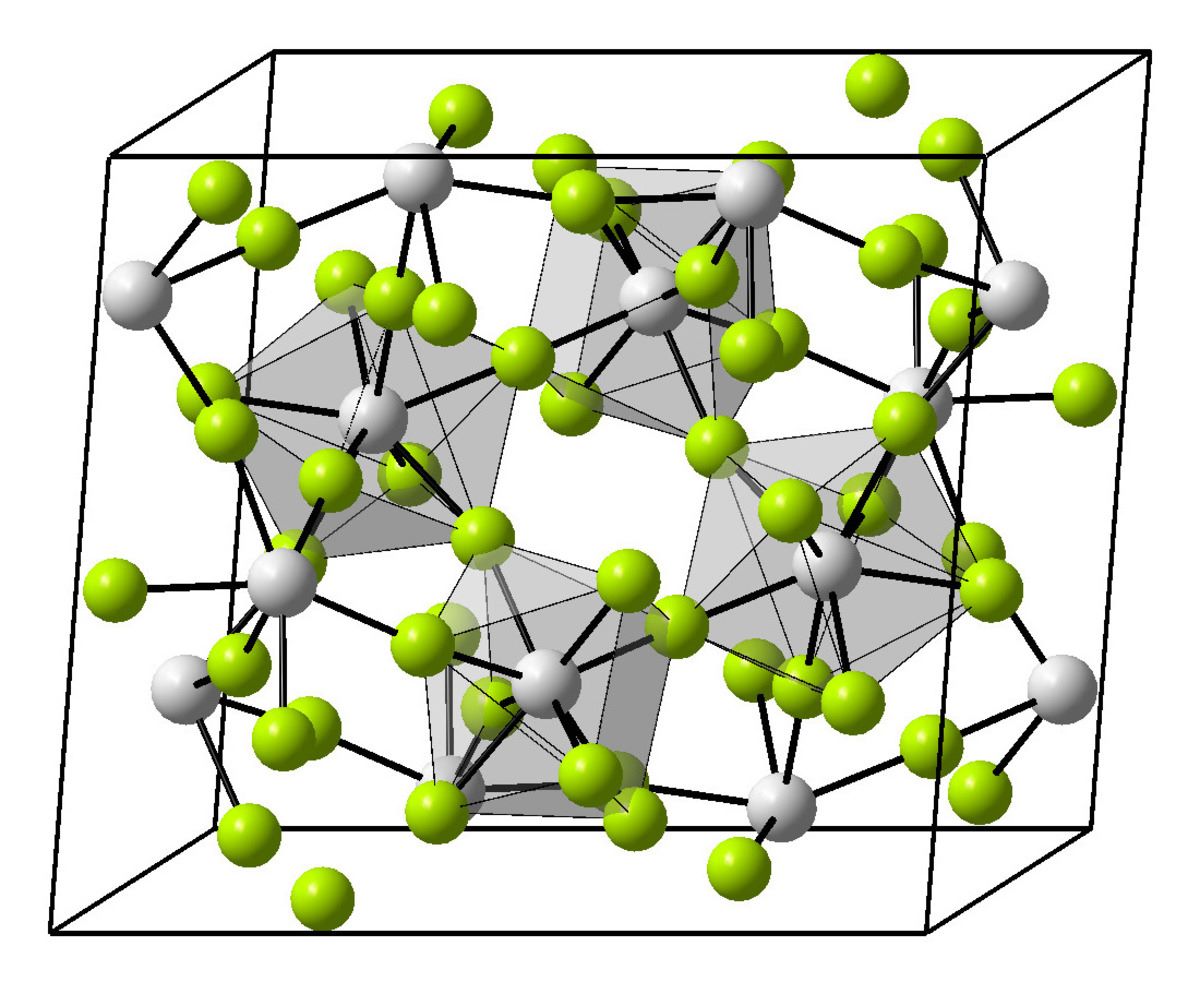
Americium(IV) fluoride is a fascinating compound with a rich history and unique properties. This chemical, often abbreviated as AmF4, plays a crucial role in various scientific fields, especially in nuclear chemistry. Americium itself is a synthetic element discovered during World War II as part of the Manhattan Project. Its fluoride form, AmF4, is known for its high reactivity and complex formation processes. Understanding this compound helps scientists develop advanced materials and explore new energy sources. In this blog post, we'll dive into 30 intriguing facts about Americium(IV) fluoride, shedding light on its discovery, uses, and the science behind it. Get ready to uncover the secrets of this remarkable substance!
Key Takeaways:
- Americium(IV) Fluoride is a rare, radioactive compound used in nuclear research and advanced material science. It requires careful handling and is not found naturally, making it a subject of fascination for scientists.
- Producing Americium(IV) Fluoride involves complex processes in controlled environments, typically in nuclear laboratories. Its unique properties, such as being paramagnetic and insoluble in water, contribute to its significance in scientific studies.
What is Americium(IV) Fluoride?
Americium(IV) fluoride, a chemical compound with the formula AmF₄, is a fascinating substance. It contains the element americium, which is part of the actinide series. This compound is not something you encounter every day, making it a subject of interest for scientists and curious minds alike.
- Americium(IV) fluoride is a radioactive compound.
- It is composed of americium and fluorine atoms.
- The chemical formula for americium(IV) fluoride is AmF₄.
- Americium, the element in this compound, was discovered in 1944.
- This compound is typically found in a solid state at room temperature.
How is Americium(IV) Fluoride Produced?
Creating americium(IV) fluoride involves specific processes. These methods are often complex due to the radioactive nature of americium.
- Americium(IV) fluoride is produced by reacting americium(III) fluoride with fluorine gas.
- The reaction requires high temperatures to proceed.
- This process must be conducted in a controlled environment to ensure safety.
- The production of americium(IV) fluoride is typically done in nuclear laboratories.
- Special equipment is necessary to handle the radioactive materials involved.
Uses of Americium(IV) Fluoride
Despite its rarity, americium(IV) fluoride has some interesting applications. These uses are often related to its unique properties.
- Americium(IV) fluoride is used in nuclear research.
- It helps scientists understand the behavior of actinides.
- This compound can be used to study radiation shielding.
- It is sometimes used in the production of other americium compounds.
- Americium(IV) fluoride plays a role in advanced material science.
Safety and Handling of Americium(IV) Fluoride
Due to its radioactive nature, americium(IV) fluoride requires careful handling. Safety protocols are crucial when dealing with this compound.
- Handling americium(IV) fluoride requires protective gear.
- It must be stored in shielded containers.
- Laboratories use ventilation systems to manage any released gases.
- Radiation detectors are essential when working with this compound.
- Proper disposal methods are necessary to prevent environmental contamination.
Physical and Chemical Properties
Americium(IV) fluoride has distinct physical and chemical properties that make it unique. Understanding these properties helps scientists utilize the compound effectively.
- Americium(IV) fluoride is a yellow-brown solid.
- It has a high melting point.
- The compound is insoluble in water.
- It is paramagnetic, meaning it is attracted to magnetic fields.
- Americium(IV) fluoride can react with acids to form different compounds.
Interesting Facts about Americium(IV) Fluoride
There are several intriguing aspects of americium(IV) fluoride that make it a subject of fascination.
- Americium was named after the Americas.
- The element americium is used in smoke detectors.
- Americium(IV) fluoride is not found naturally; it is man-made.
- The study of americium(IV) fluoride helps in understanding nuclear fission.
- This compound is part of the transuranic elements, which are elements beyond uranium on the periodic table.
The Fascinating World of Americium(IV) Fluoride
Americium(IV) fluoride, a compound with a rich history and unique properties, continues to intrigue scientists and enthusiasts alike. Its role in nuclear reactors and potential applications in various fields highlight its significance. From its discovery in the mid-20th century to its current uses, this compound has proven to be both useful and complex.
Understanding the properties and behavior of americium(IV) fluoride can lead to advancements in nuclear science and technology. Its ability to form stable compounds and its radioactive nature make it a subject of ongoing research.
Whether you're a student, a scientist, or just curious about the elements, americium(IV) fluoride offers a glimpse into the intricate world of chemistry and nuclear physics. Keep exploring, and who knows what other fascinating facts you'll uncover about this remarkable compound!
Frequently Asked Questions
Was this page helpful?
Our commitment to delivering trustworthy and engaging content is at the heart of what we do. Each fact on our site is contributed by real users like you, bringing a wealth of diverse insights and information. To ensure the highest standards of accuracy and reliability, our dedicated editors meticulously review each submission. This process guarantees that the facts we share are not only fascinating but also credible. Trust in our commitment to quality and authenticity as you explore and learn with us.
